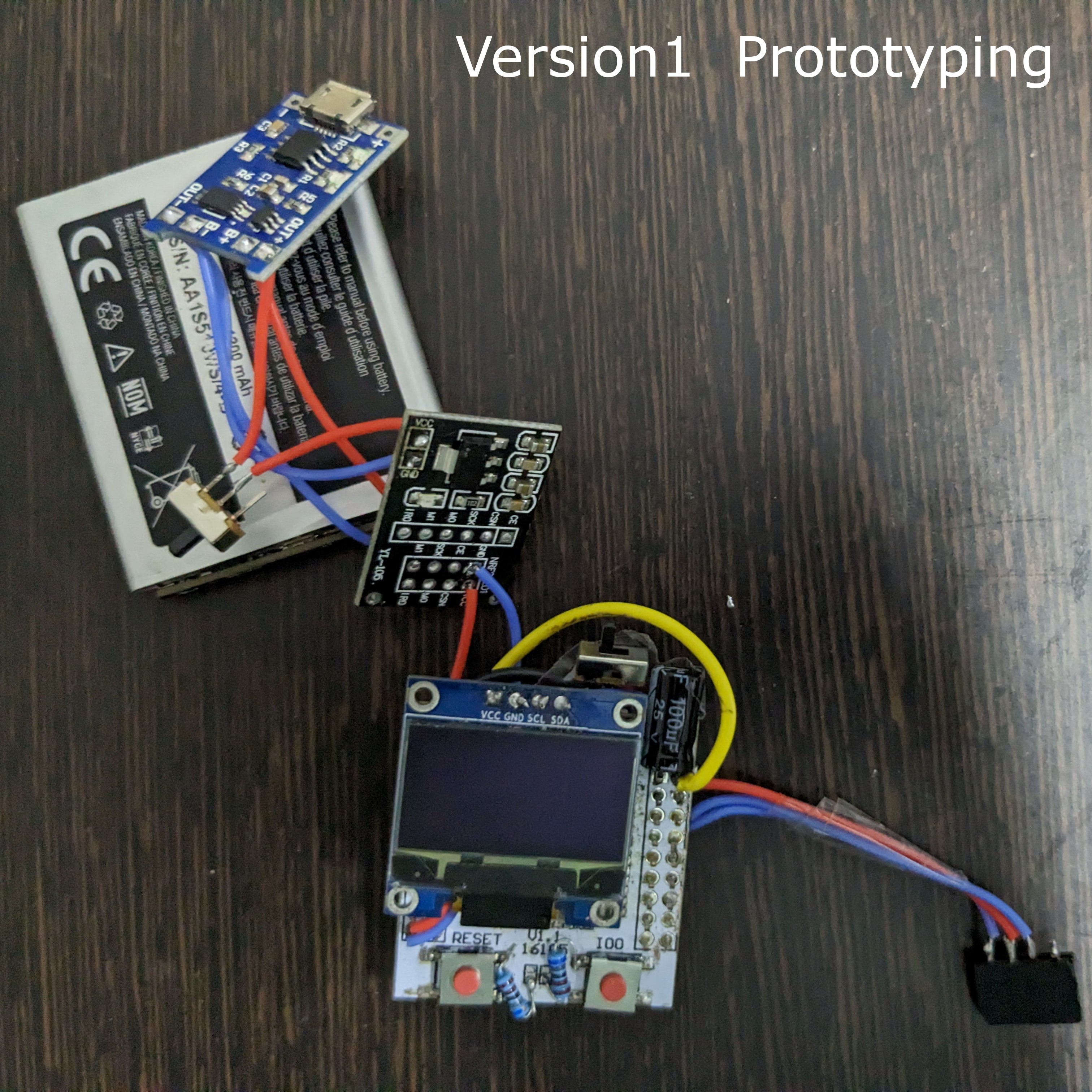By simply tapping, swiping, or sliding the strap across parts of your body, you can navigate through different watch functions and menus.
When the watch is worn, users can access different functions such as time, stopwatch, alarm, etc by swiping. But they cannot change the time, alarm, etc.
When the watch is removed from the wrist, users can change the time, alarm, countdown, etc by performing touch gestures on the strap.
The plan is to use a hybrid resistive and capacitive touch system, both technologies are combined to offer improved performance and functionality. Here's how it should work:
- Touch detection: Capacitive touch sensing is primarily used for touch detection. It provides faster response times and can accurately detect multiple touch points simultaneously, allowing for advanced gestures like pinch-to-zoom or multi-finger interactions.
- Pressure sensing: Resistive touch sensing is employed to measure pressure. It can detect the level of force applied to the touch surface. By combining pressure sensing with capacitive touch detection, the system can differentiate between light touches and firmer presses, enabling more nuanced interactions.
- Compatibility: Hybrid systems often retain the compatibility of traditional resistive touch technology, which can be operated with a finger, elbows, or prosthetics. Capacitive touch technology, on the other hand, generally requires a conductive object like a finger for touch input.
By combining the strengths of both technologies, hybrid resistive and capacitive touch systems aim to provide a more accurate, responsive, and versatile touch experience for prosthetics as well as epidermal gestures.
To prevent accidental presses different strategies can be used, similar to palm rejection, double tap, or lock screen which are currently used in smartphones.
Why not turn the watch face into a touch-sensitive display as opposed to the strap?
The primary reason is visual obstruction, functionalities such as changing time, setting the alarm etc need visual feedback to be accurately set. Touchscreen based Smartwatches mitigate this by having buttons or using the connected smartphone to change the time, set alarm etc.
What about the Apple Watch assistive gestures for single-hand usage?
Although they do work well, it requires dexterous movement of fingers, and also the user interaction is more suited for smartwatch applications such as play/pause music. It is quite cumbersome to change time, set alarms, countdowns, etc with the hand gestures such as pinch and clench.
Won't a capacitive sensing strap be affected by the hand it is worn on?
Yes, to some degree but we will be measuring the changes in capacitance over a specific region as opposed to an absolute value.
But won't you need to use two hands to wear the watch?
The watch strap utilizes magnets for attachment and offers a convenient way for users to wear the watch using only one hand.
How will capacitive touch be implemented?
Many microcontrollers come with capacitive sensing pins (eg ESP32), which can be connected to flexible copper pads inside a flexible PCB.
 [Image of Trill flex sensor from: https://learn.bela.io/tutorials/trill-sensors/designing-a-custom-flex-sensor/]
[Image of Trill flex sensor from: https://learn.bela.io/tutorials/trill-sensors/designing-a-custom-flex-sensor/]
During the prototyping stage copper tape will be used and later a customized PCB will be designed.
How will resistive touch be implemented?
Pressure-sensitive conductive sheet (Velostat) will be sandwiched between two flexible PCBs with exposed traces.
 [Image From: https://www.researchgate.net/figure/Topology-and-dimension-of-9-sensing-elements-in-the-33-matrix_fig1_342320526]
[Image From: https://www.researchgate.net/figure/Topology-and-dimension-of-9-sensing-elements-in-the-33-matrix_fig1_342320526]
During the prototyping stage copper tape along with velostat will be used and later a customized PCB will be designed.
The circuitry will be embedded in a silicone strap, which is made by pouring liquid silicone into a 3D-printed mold. Another way would be to use a flexible 3d printing filament to make the strap.
 Josh Joy
Josh Joy







 Chirag Mahaveer Parmar
Chirag Mahaveer Parmar
 Facundo Noya
Facundo Noya
 Ultimate Robotics
Ultimate Robotics
 dariocose
dariocose
great idea! Thanks for sharing
It cd also be combined with motion sensing and with other mobile devices
...real-time physics in and control signals out